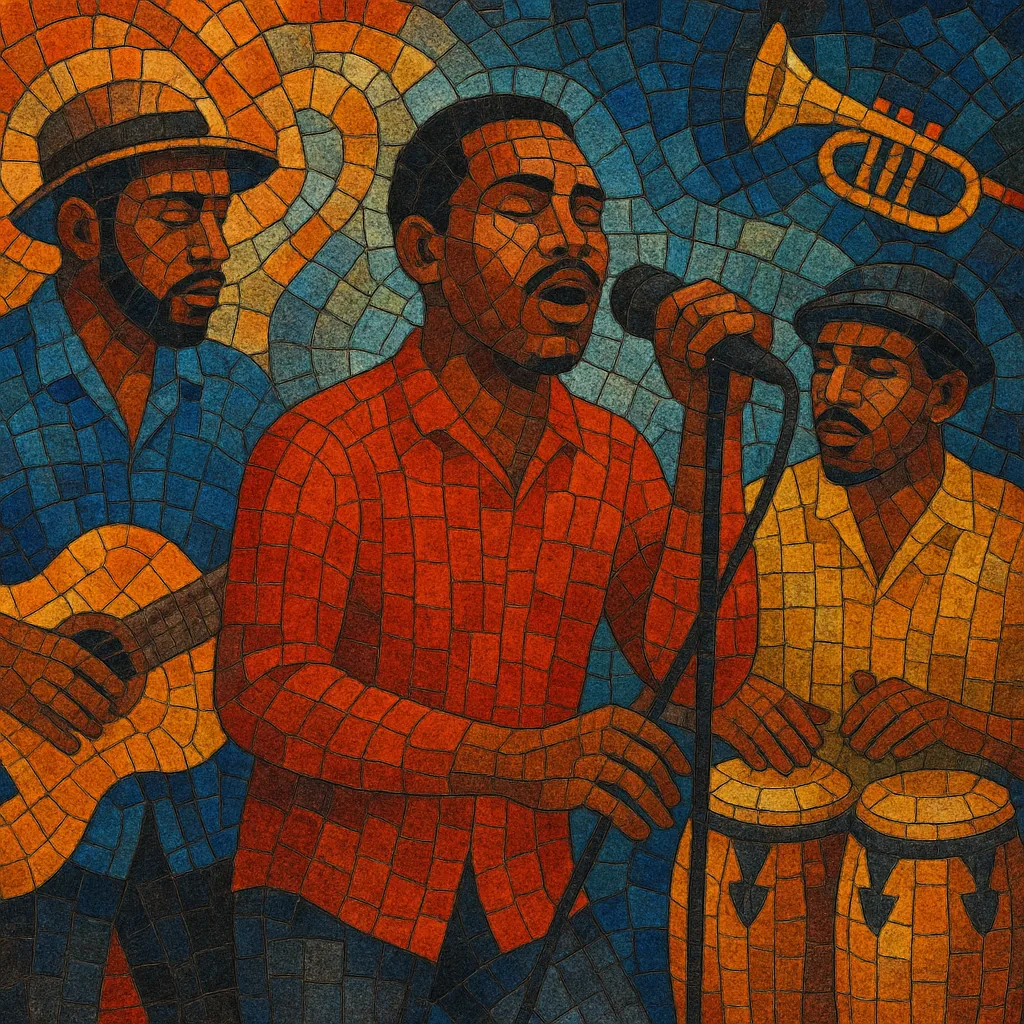Compas (also spelled konpa or compas direct) is Haiti’s modern, méringue-based dance music. It features a steady, driving groove, lyrical melodies, and tight horn or synth hooks designed for continuous social dancing.
The style blends Haitian méringue rhythms with jazz and Afro‑Cuban/Latin elements, typically in a mid‑tempo 4/4. A locked‑in drum/cowbell pattern, syncopated bass ostinatos, percussive rhythm guitar, keyboards playing montuno-like figures, and call‑and‑response vocals in Haitian Creole or French are core traits. Since the late 1970s, electronic keyboards and drum machines have been common, but the feel remains warm, romantic, and unshakably danceable.
Compas emerged in Port‑au‑Prince in the mid‑1950s, led by bandleader and saxophonist Nemours Jean‑Baptiste. He coined “compas direct” (konpa direk) to describe a streamlined, dance‑floor‑focused update of Haitian méringue that used modern band orchestration and a strong, steady groove. Early radio broadcasts and ballrooms helped the music quickly become Haiti’s dominant popular dance style.
Guitarist/bandleader Weber Sicot (an early collaborator of Nemours) branched off with a competing style known as cadence rampa. Meanwhile, large orchestras and then smaller “mini‑jazz” guitar groups (e.g., Shleu‑Shleu, Les Frères Déjean) proliferated, taking compas into clubs, records, and regional tours. The music modernized with electric guitars, tighter rhythm sections, and brass/sax arrangements while retaining its Haitian rhythmic identity.
Migration to cities like New York, Miami, Montreal, and Paris created a transnational scene (the HMI—Haitian Music Industry). French Antillean artists adapted Haitian compas/cadence into local variants that fed directly into zouk (popularized by Kassav’), which then influenced kizomba in Lusophone Africa. Haitian bands incorporated synthesizers, drum machines, and slick studio production, and a smoother, romantic “compas love” aesthetic took hold.
Compas remains Haiti’s flagship dance music and a staple at Caribbean and diaspora events worldwide. Modern acts mix polished pop hooks, R&B harmonies, and electronic textures with the classic compas rhythm, keeping the genre fresh while preserving its social‑dance function and Haitian cultural identity.


